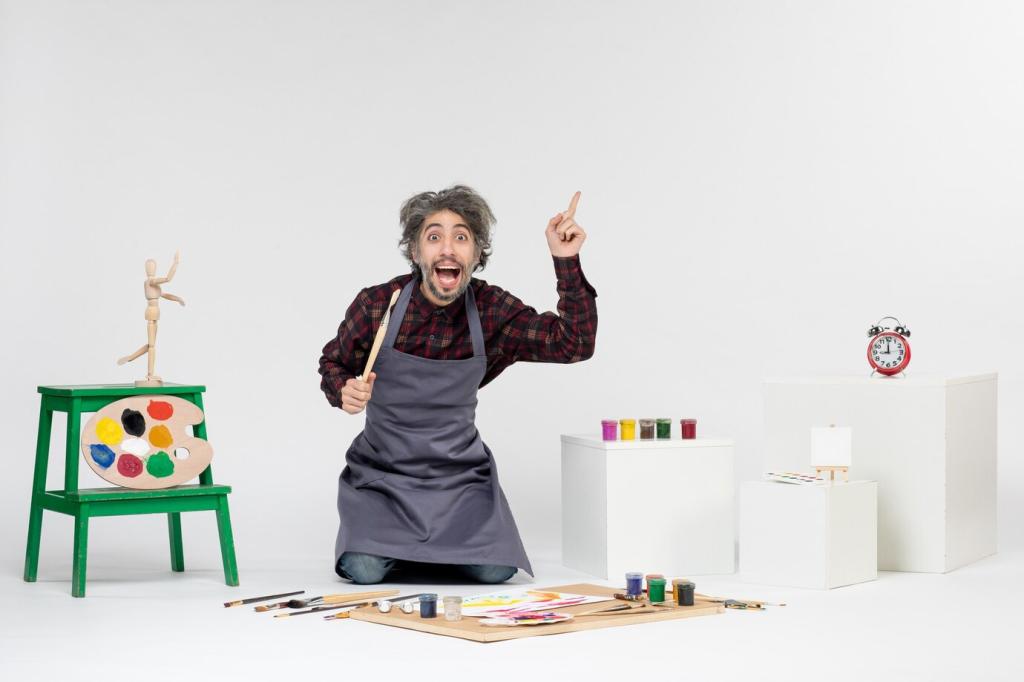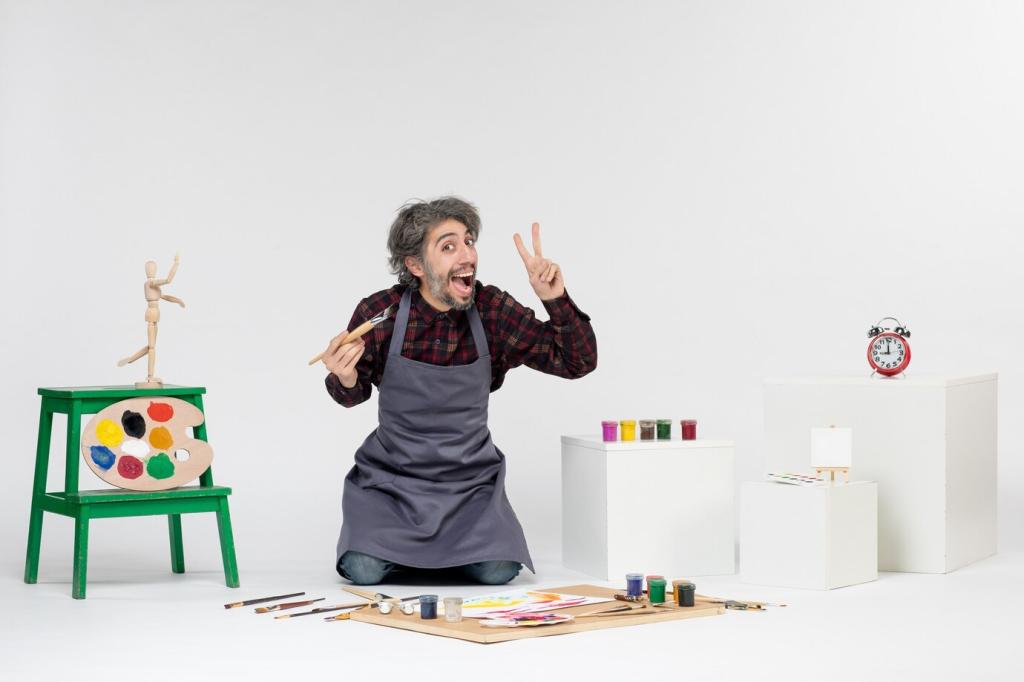Design Planning: Layouts, Color, and Composition
Lightly sketch your design or print a faint template, then place it beneath translucent paper for guidance. Use low-tack tape to hold your base sheet steady. Mark focal areas and spacing, ensuring your quilled elements nest cleanly within the planned outline.
Design Planning: Layouts, Color, and Composition
Analogous palettes feel calm, complementary schemes pop dramatically. Reserve bold accents for focal points, and let neutrals support readability. Swatch strips under daylight before gluing, since many quilling papers shift slightly in tone under warm indoor lighting.




